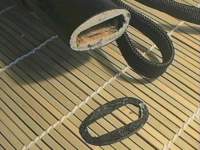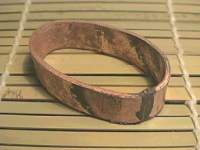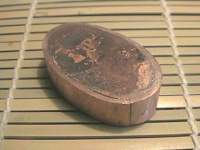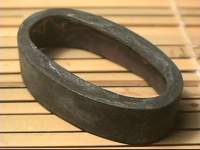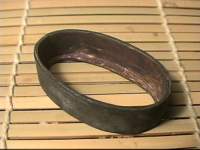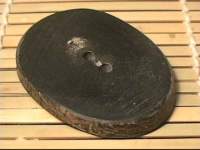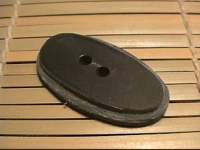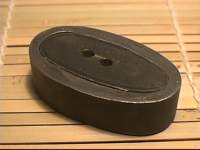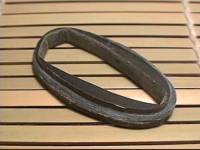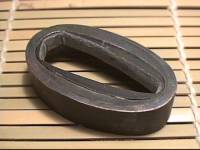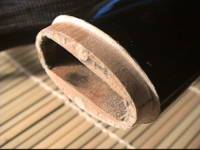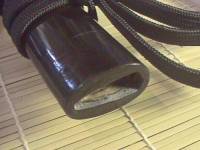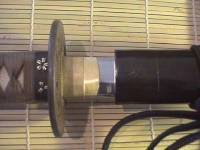In order that the sword fits well in the Saya, the Saya opening should
be adapted to the Habaki. This opening is called Koiguchi (carp muzzle).
Referring to this, the Saya of the Practical Katana is quite unpractical,
because a simple plastic disk was glued on. When tilting the blade the
adhesive loosens and the plastic disk falls off...
This plastic disk is replaced by a properly matching horn plate, which
is connected firmly by a copper ring with the Saya.
This construction is not traditional...
A copper ring is bent and soldered, which corresponds accurately to the
cross section of the Saya.
The copper plate is soldered properly matching
into the opening of the ring.
This procedure is identical to the production of the Fuchi.
The inner part of the soldered plate is cutted out nearly up to the edge, so that the ring finally gets an edge directed inward. This prevents the horn plate from tearing off when pulling the sword out of the Saya.
Here you can see the soldered edge from the inside.
As horn plate a large 5mm thick horn button is used.
The button is beeing filed in shape...
... that it can be inserted from the rear into the copper ring.
The actual sword opening is cut into the horn plate. A tight fit of the
Habaki should be ensured.
In my case the horn in in direct contact with the Habaki. There is no wood between the horn and the Habaki.
The horn plate is inserted and glued into the copper ring.
The edge of the original Saya opening is filed, so that the copper ring with horn part fits properly and forms the new Koiguchi.
The Koiguchi and Saya are glued together and painted black.
The finished Koiguchi!
